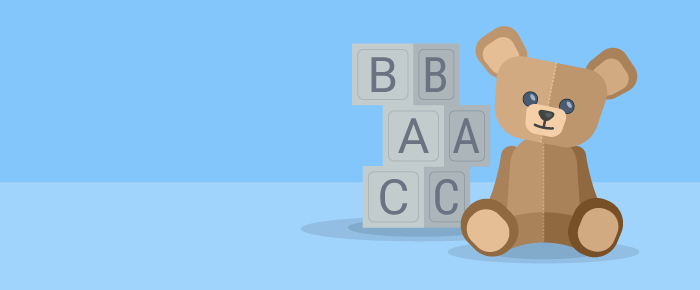What Big Stores Aren’t Telling You About Choosing Toys

After years as an early intervention therapist, one day, I became a mom. Suddenly, everything I’d learned about early development dimmed in comparison to the bright, flashing, neon lights the world was sending me about my child’s learning needs. Later on, after I regained my sanity (and sleep!), I revisited what I always knew about child development and dug even deeper, learning new things and meeting bright professionals who shared my passion for play. So I decided to contribute to the collective voice of professionals advocating for play as the best form of early learning. As a pediatric therapist, I knew how important play was. But as a mother, I knew how challenging it was to find that essential message. Our MedBridge course, Bringing Back Play, is part of that contribution.
What should I consider when choosing toys?
Consider the child’s developmental level before purchasing toys. I know what you’re thinking, “Oh, I do that. The age is on the box.” But the big stores sell the same toys to parents of new babies. Even if you’re new to pediatrics and child development, I’m sure you inherently understand (when you step back from the marketing trance) that it’s developmentally inappropriate. Don’t trust that the age on the box matches the child’s age.
Educate yourself on real development before purchasing or recommending toys. Among the many approaches, we think we have one of the easiest – developmental milestones paired with practical play-based intervention, suggestions for which will best fit in a bag or on a tablet.
Why does it matter?
Here’s why. Babies learn through play. Purposeful play that matches their current developmental level develops the brain in ways that will be essential later in life.

- Block play helps the brain in many ways, but most importantly, with spatial reasoning used for everything from putting leftovers away in the correct-sized containers to learning geometry (learn more here).
- Play that encourages language prepares a child for their future relationships.
- Motor-based play develops their bone density so they don’t get stress fractures in the first year of soccer.
I could go on for hours. Trust me, it matters.
If current development matters, why don’t the stores tell me that? Or why don’t they sell toys that are more appropriate for babies?
Simple. Because parents will buy that plastic laptop, handheld game player, cell phone, play table, or cube – anything that counts and sings the alphabet in 4 languages. The stores know parents will, and so will their neighbors, friends, and relatives. Why? Because the toys stores share the message – even if it’s not directly marketed – that an 18-month-old needs to know her ABC’s. Parents are hearing it without realizing it and the little voice in their heads whispers, “If she can’t count to 10 in the next few months like Smarty Pants down the street, she’ll never get into Harvard, and she’ll never be happy.” (Okay, maybe that’s an exaggeration, but you get the point.) So without even consciously thinking about it, parents suddenly line up like ants to buy the light-up toy so their baby is happy, smart, and isn’t left behind.
But wait! What really makes babies smart isn’t those toys, but pots and pans, wooden ring stackers and shape sorters, and home-made toys like these. But they don’t cost nearly as much, or anything at all. Pause for a second and think who is telling us what to buy and why.

Do they have children’s best interest at heart? The American Academy of Pediatrics recommends no screen time – that’s right, zero TV, DVDs, or any other devices with screens – before 2 years of age (learn more on our website). So, why do many “baby toys” have them? We should instead empower parents to become the decision-makers over what their child learns and plays with.
Okay, I’m on board. Where do I find these toys?
Make them. Our Pinterest page offers many cheap and easy DIY play ideas (neither of us is overly crafty, promise!) for each age, and we continuously update it with new favorites. The reference cards in 1-2-3 Just Play With Me share toy suggestions by age and type of play.
Think local. Google “developmental toy store” and look for shops in your area. When in doubt, search online for brands. We like and trust names like HABA, Melissa & Doug, and Manhattan Toys, to name a few.
What else do I need to know?
Less is more. Too many toys overwhelm and confuse a child. Remind parents to keep it simple, set limits, and show love with time, not their wallets.
The best way to play is with an adult who cares. We learn through examples. Enlighten parents that their presence (not presents!) and a child’s imagination are the secret ingredients for successful learning through play!
Is this hitting home for you as a therapist? How many times have you walked into a house and had to burst the bubble of an eager parent who had flashcards for their 5 month old? Trust your guts and us when you pair a child’s interests and abilities with purposeful play. You’ll see the magic of play, and your sessions will become more productive and fun!
Interested in learning to pair development with play?
Check out Bringing Back Play. Parents look to us, pediatric therapists, for advice on their child’s development, toys, and education. The authors take this role and their role as advocates for preserving play in a changing world very seriously, and we hope you’ll join us! It’s our hope that this course will prepare and inspire you to do just that! Together, we can support early learning – one pot or pan at a time.


